|
|
Post by Lee Martin on May 4, 2016 19:14:53 GMT -5
No chance of your head exploding Gregg. Charles - Saturday is a tune day. 3-shot groups with 0.3 gr intervals of LT-32 and 5 seating depths per. My hope is I find a few combinations that these 67's take to. I'll post the results early next week. -Lee www.singleactions.com"Chasing perfection five shots at a time" |
|
|
|
Post by mhblaw on May 6, 2016 15:34:20 GMT -5
Very interesting. A Master at work...
|
|
|
|
Post by Markbo on May 6, 2016 21:21:49 GMT -5
Beautiful and very, very impressive process. I sume he tip is not solid, i.e. a tiny HP. Can you show a close up of the tip?
|
|
|
|
Post by cherokeetracker on May 7, 2016 9:05:43 GMT -5
Markbo The tips are not solid, but close, yes there is a tiny opening in the end of the bullet. I will let Lee explain better or even offer up a photo.
Charles
|
|
|
|
Post by cherokeetracker on May 10, 2016 17:27:21 GMT -5
Ok I have got 1K riding on 28.3 w/.005 off the lands. My Bookie is waiting on you Lee.
Charles
|
|
|
|
Post by Lee Martin on May 10, 2016 19:14:18 GMT -5
Beautiful and very, very impressive process. I sume he tip is not solid, i.e. a tiny HP. Can you show a close up of the tip? Markbo - Charles is right. The tip is a tiny hollowpoint. Here's a close-up shot: 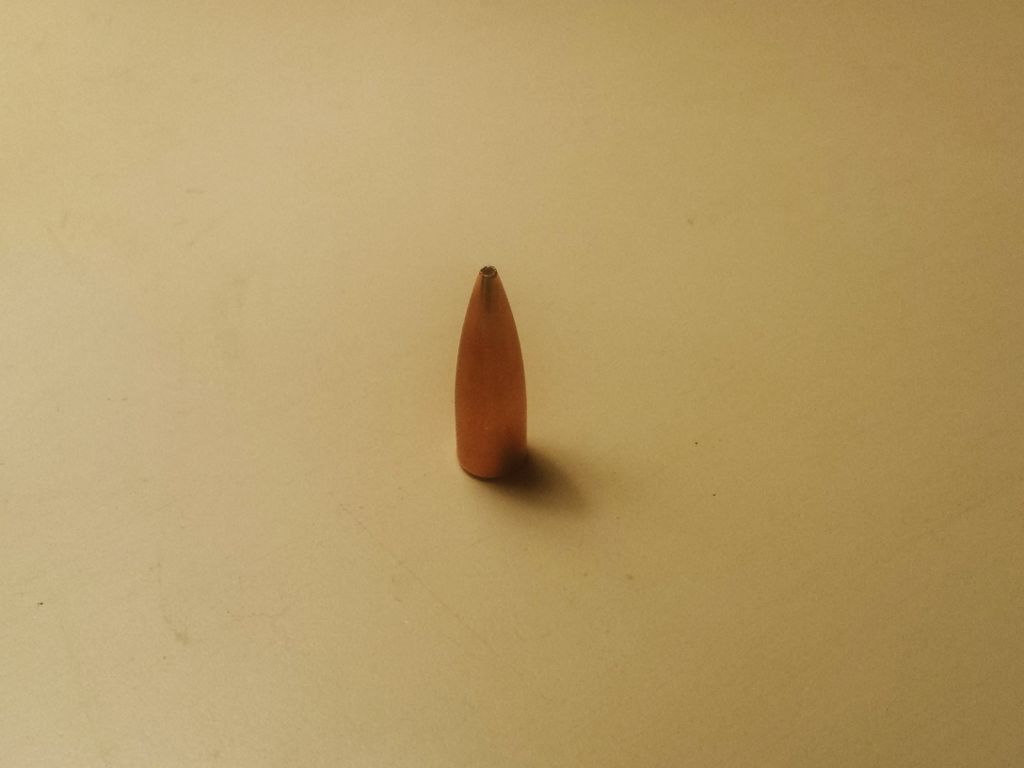 -Lee www.singleactions.com"Chasing perfection five shots at a time" |
|
|
|
Post by Lee Martin on May 10, 2016 19:18:56 GMT -5
The Martin 67 gr FB – Maiden Journey ________________________________________ Over the weekend I ran 3-shot tests with my 67 gr flat-base and they did fantastic. Somewhat limited on time, I tried four weights of LT-32 and four seating depths. Surprisingly, at 0.005" into the lands above jam and they seemed charge agnostic. Across almost a 1.0 grain window they went in the same hole. The upper left is in fact three shots on top of one another. Jam and jam minus 0.005" weren't as good, but some of that was on me (either poor gun handling or flag mis-reads). 0.010" back from jam and they again showed promise. Next time I'll go up on the LT and expand my seating depths in both directions. I believe touch is between 0.015" and 0.020" from jam, though that's unconfirmed. But so far it appears they want to be engraved by the rifling. 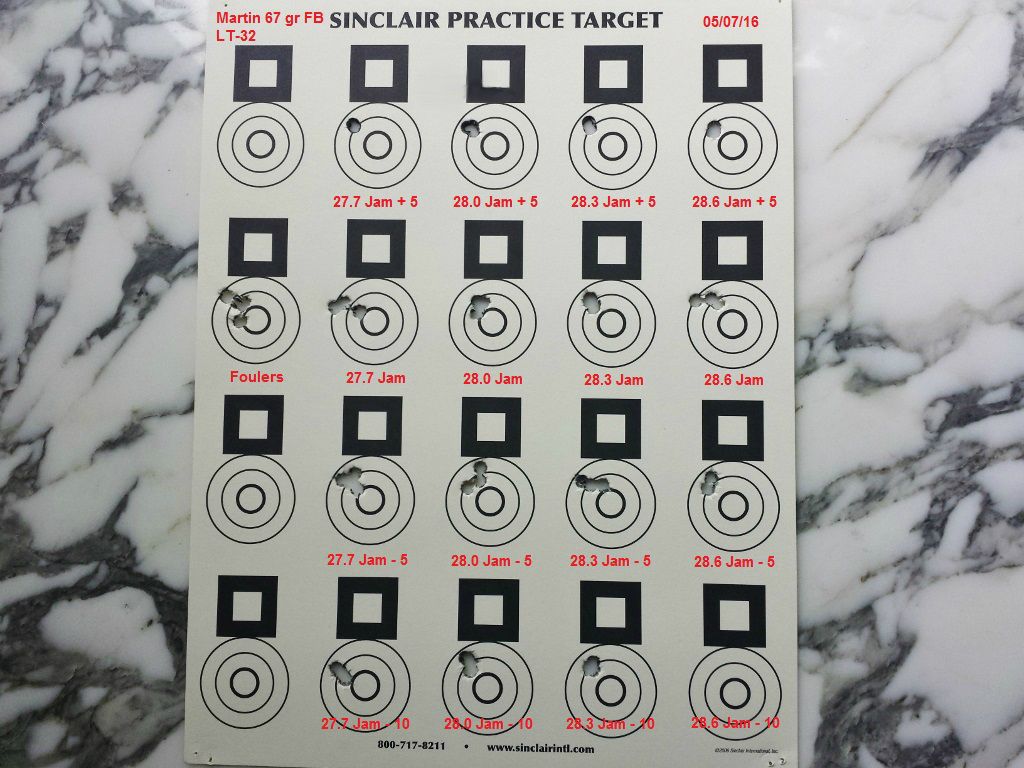 I did lay down two five-shot strings on official targets. 27.7 grs @ jam +0.005" for a 0.177”: 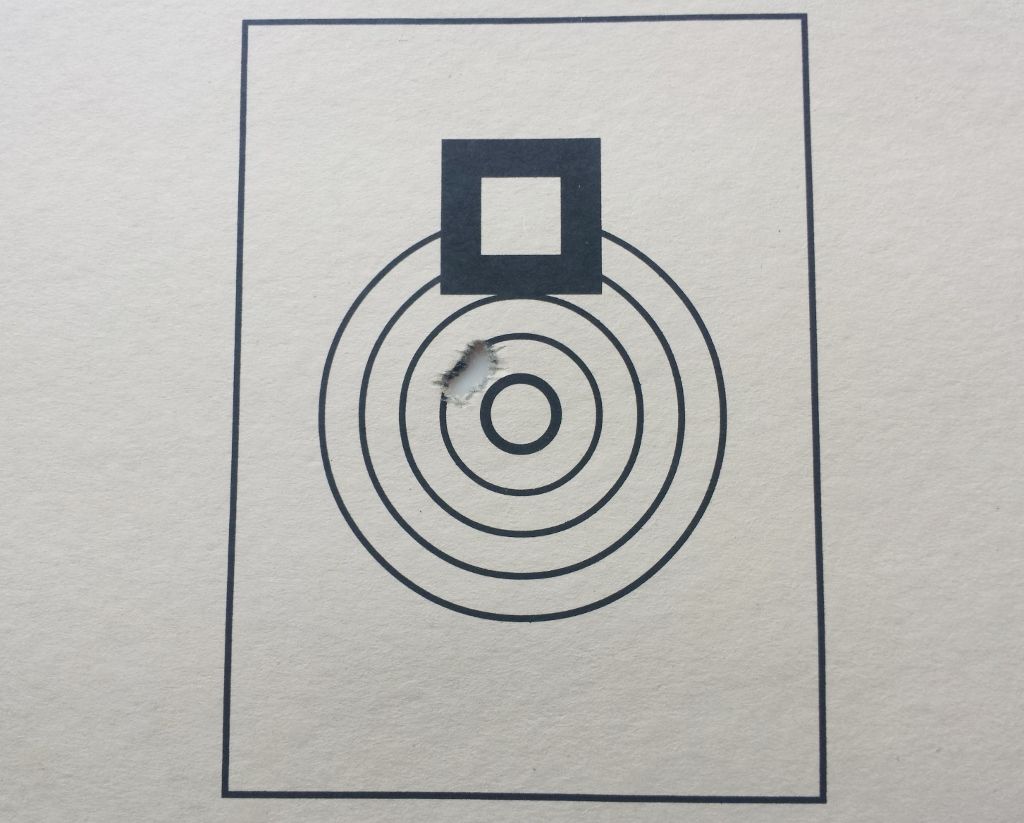 And 28.3 @ jam +0.005", measuring 0.108” (you we close Charles): 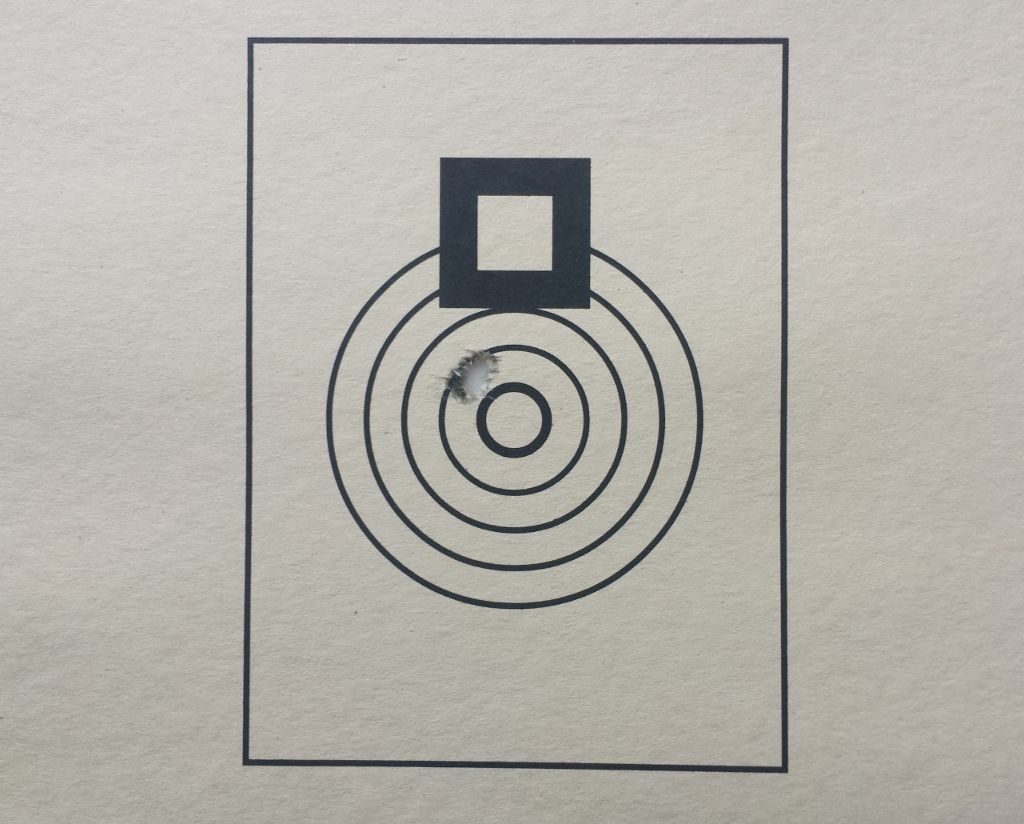 Quite day for these little 6’s. We’ll see if I can keep it up. Credit goes to George Ulrich for a world-class set of dies, Bart Sauter and the Hines Tactical jacket, and my dad for smithing the rifle. For the sake of transparency, winds were mild on Saturday. Temperature averaged 56.0 degrees and humidity ~86% (so much for LT not liking wet air). The Shilen has 1,200 rounds through it and the brass has been reloaded 24 times. -Lee www.singleactions.com"Chasing perfection five shots at a time" |
|
|
|
Post by Markbo on May 10, 2016 19:31:14 GMT -5
What is your guesstimate on competitive barrel life with this round?
|
|
|
|
Post by cherokeetracker on May 11, 2016 8:47:00 GMT -5
All the joking about my prediction was fun,,,, But This has simply astonished me. It would seem that the node got widened or lengthened a little and the fact, that you were able to use different COALs simply blew me away. I thought you had some very accurate bullets before. Now, I am amazed, that the results were such. I am sure that you are pleased. I am curious as to what your Dad thinks?
I am not going to be surprised if others are going to be wanting some of these bullets.
David Bradshaw was right when he stated that "these bullets" were going to be the arbiter.
It appears to me that your shooting is improving also. Getting more familiar with your equipment, and getting brushed up on readings. I do give credit to all of those who helped with this. Thanks, excellent job.
Charles
|
|
|
|
Post by dougader on May 11, 2016 11:20:54 GMT -5
Wow. Very impressed.
|
|
robrcg
.30 Stingray

Posts: 301 
|
Post by robrcg on May 11, 2016 21:43:58 GMT -5
Fabulous thread Lee. I wasn't here when you started it, but the bullet making process is fascinating and has yanked me in.
Rob
|
|
cmillard
.375 Atomic
   MOLON LABE
MOLON LABE
Posts: 1,989
|
Post by cmillard on May 11, 2016 22:11:30 GMT -5
damn fine shooting
|
|
|
|
Post by Lee Martin on May 17, 2016 20:14:08 GMT -5
What is your guesstimate on competitive barrel life with this round? It's hard to say. I've heard of barrels fading after 400 - 500 rounds. Conversely, I'm told some stay competitive to 2,000+. I bore-scope my Shilen every 200 shots and the rifling is solid. There's some superficial erosion just past the neck but it's only on the chamber's edge. The next eight inches shows typical wear. Of course what really matters is the tale of the target. And to this point the gun still aggs. Last Saturday I shot eight records and netted a 0.238". And that was under stiff and very switchy wind. Two of those groups, done when the conditions held, went mid 1's. -Lee www.singleactions.com"Chasing perfection five shots at a time" |
|
|
|
Post by Lee Martin on May 19, 2016 19:43:25 GMT -5
Mirage Shields _________________________ Spend a lot of time looking through scopes and you’ll learn all about mirage. In brief, mirage is a visual aberration that displaces the target from its true location. And contrary to popular belief, it is not limited to hot, humid conditions. It can rear itself even on the coldest of days. So what's the cause? Mirage stems from hot air contacting cooler atmosphere. That heat comes from a warmer surface such as a road or gun barrel. As hot and cool air mix, light gathered by the scope bends or “refracts”. Wavy patterns are then created which blur the target. They also cause the field of view to oscillate. To reiterate, this is due to light waves being refracted across air currents. To that end mirage can be a useful tool for reading wind. But you have to know what you’re doing to leverage it. Warren Page summed it up best when he said: “Mirage is like shooting through a swimming pool. Some can master it, others can’t”. The further the target is from the objective, the hazier it appears. Mirage is cumulative, meaning the more air it transverses, the more degraded the image. Higher magnification only compounds the phenomenon. 600 & 1,000 yard shooters study mirage intensely. Misreading it has a profound effect on consistent POA at those distances. Even short-range benchresters fight it at 100 yards. Many articles have been written on how to overcome this optical foe. I’ll save those techniques for a later segment. For now here is a physical barrier we use to reduce the effect. Mirage shields are just curved strips that deflect hot air away from the scope. Years ago folks attached long tubes to their objective, no different than the modern sun shade. But these extensions actually trapped hot air, often making mirage worse. Here’s are a couple from the Johnstown, NY shoot in 1948.  I suspect the tubes seen above were there to combat sunlight. Regardless, they mirror the mirage tubes found throughout benchrest up until the 1990’s. Competitors now favor aluminum or plastic shields which attach to the barrel by Velcro tabs. Illustrated on my 6 PPC: Two Velcro sticky tabs are added to the barrel:  The aluminum shield, akin to a venetian blind, has Velcro that mates to the barrel tabs. 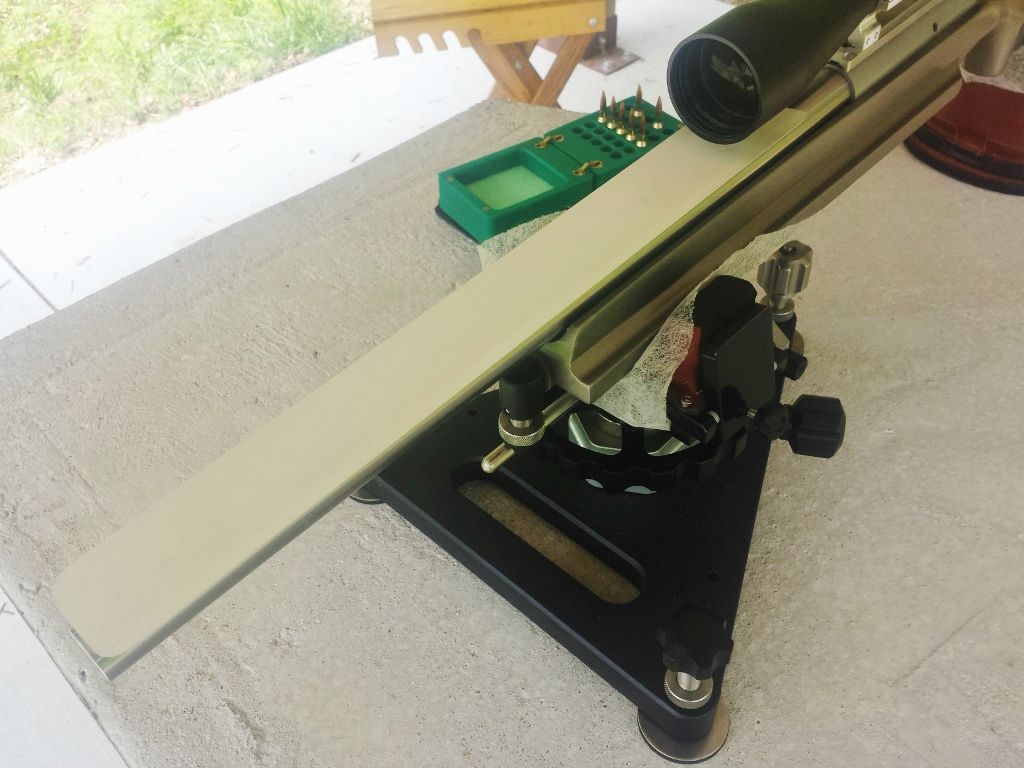 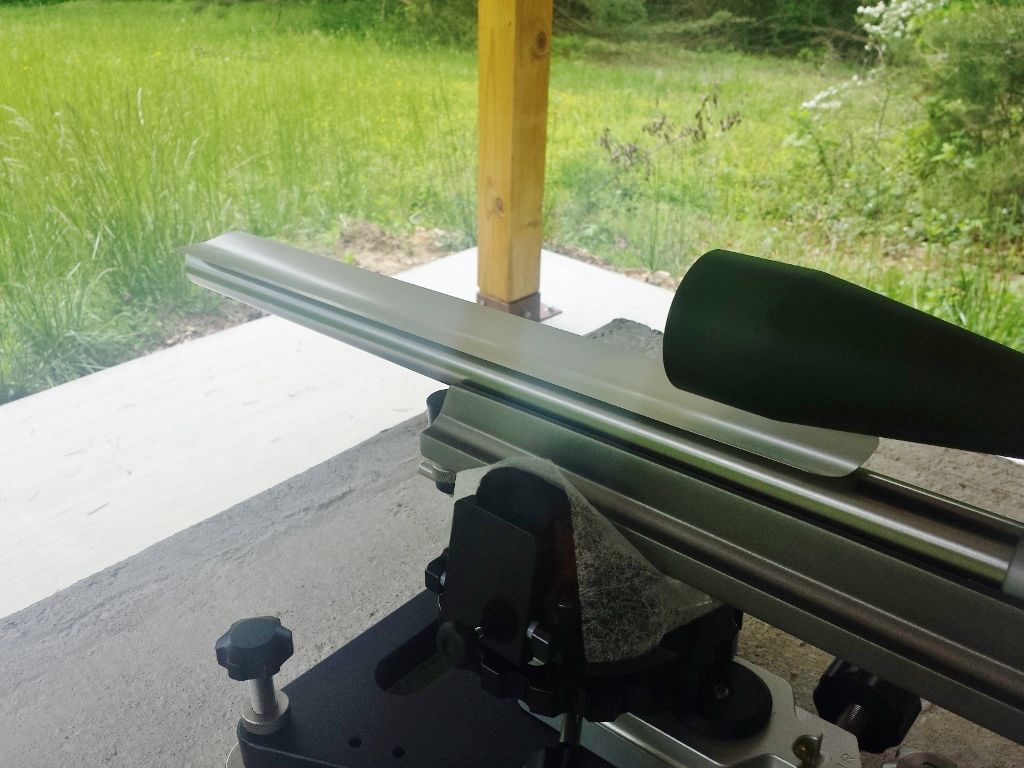 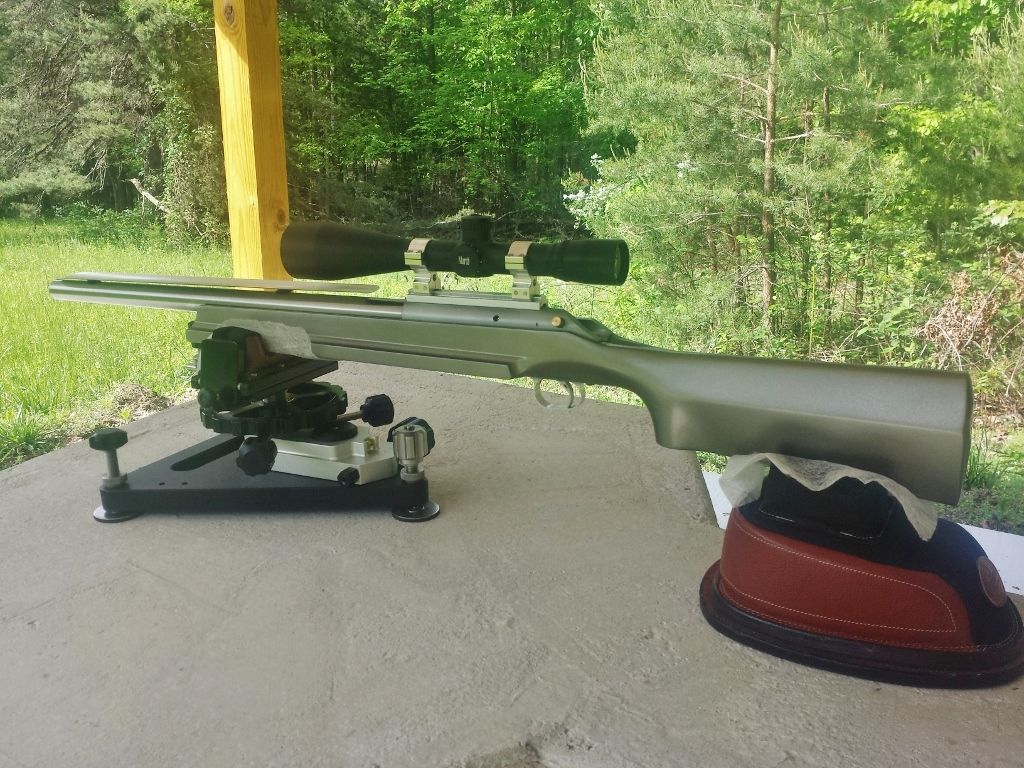 Shields don’t completely eliminate mirage, but they’ll cut it by a sizeable amount. -Lee www.singleactions.com"Chasing perfection five shots at a time" |
|
mtngun
.240 Incinerator

Posts: 12 
|
Post by mtngun on May 25, 2016 10:01:11 GMT -5
Awesome thread, Lee. You do a great job of explaining things. What are the sheets between the stock and the bags? Dryer sheets?  |
|